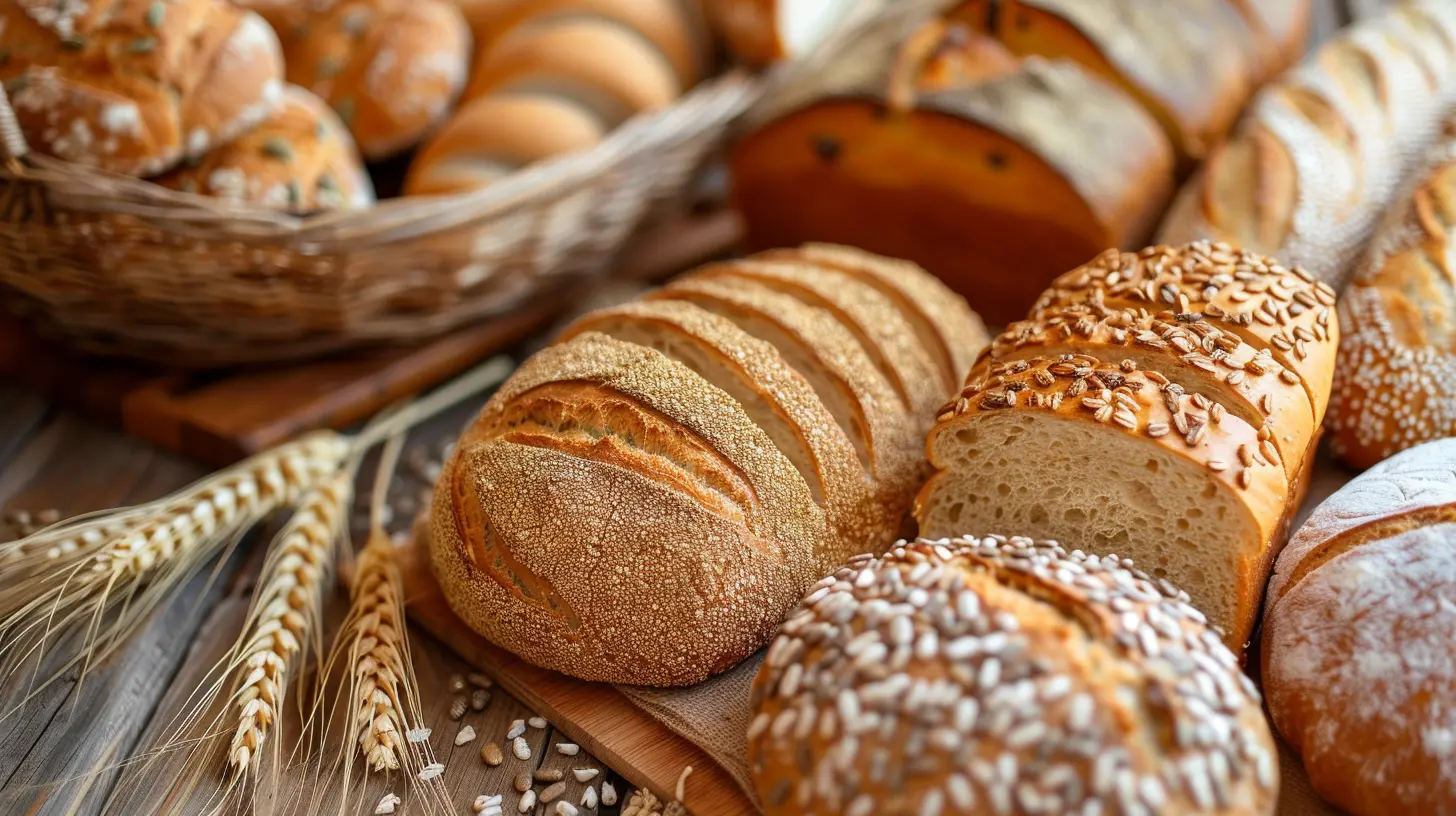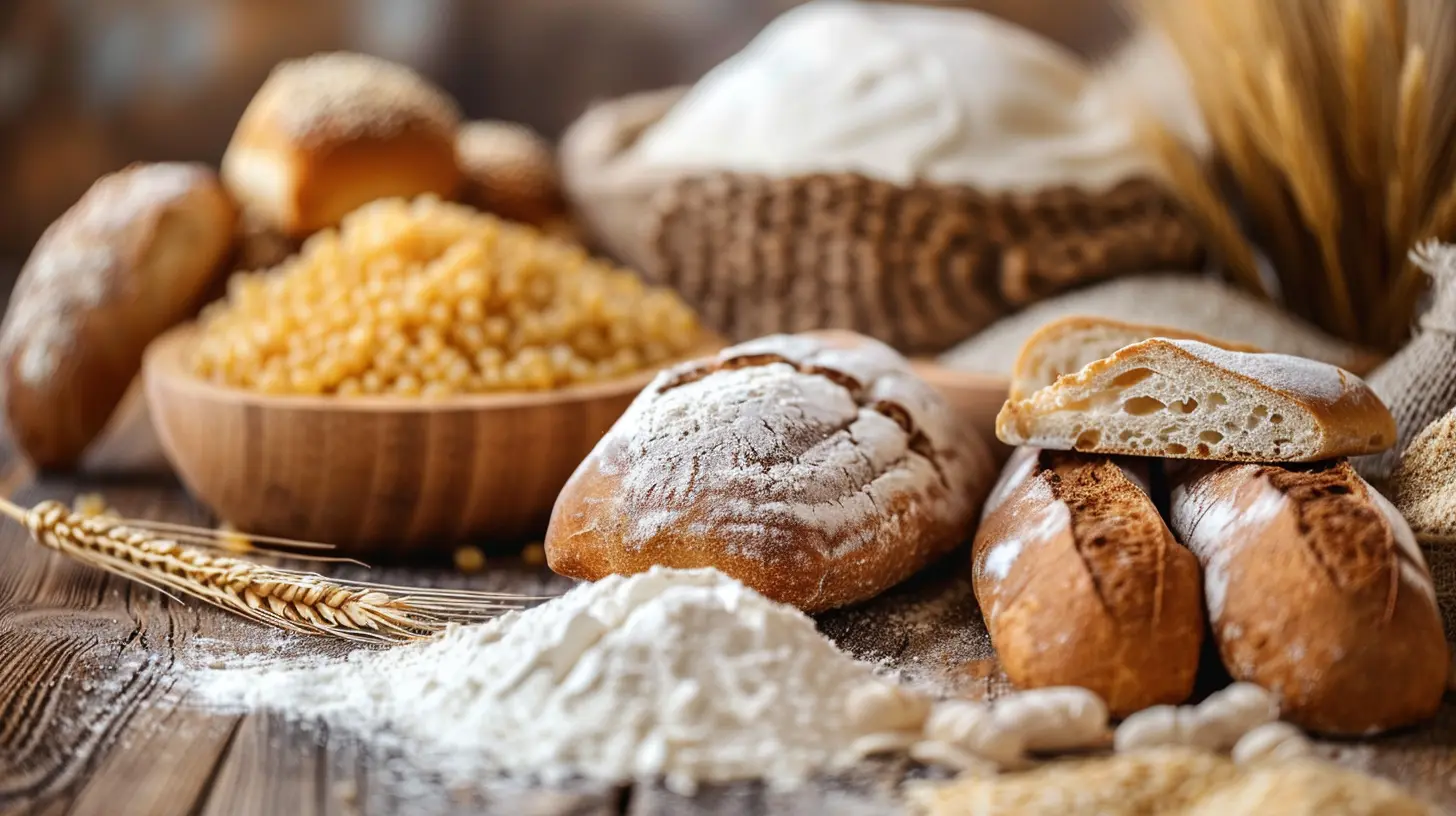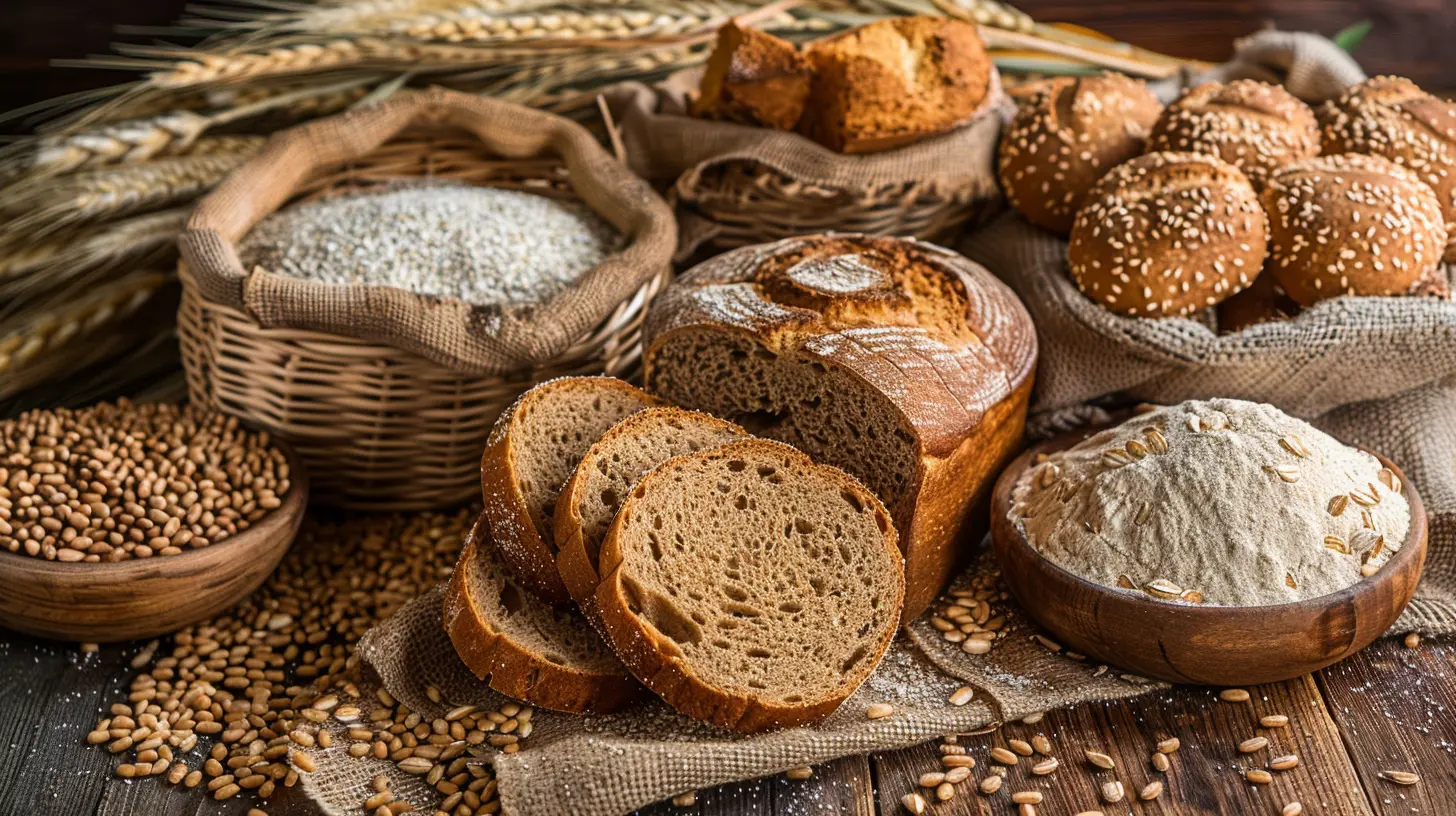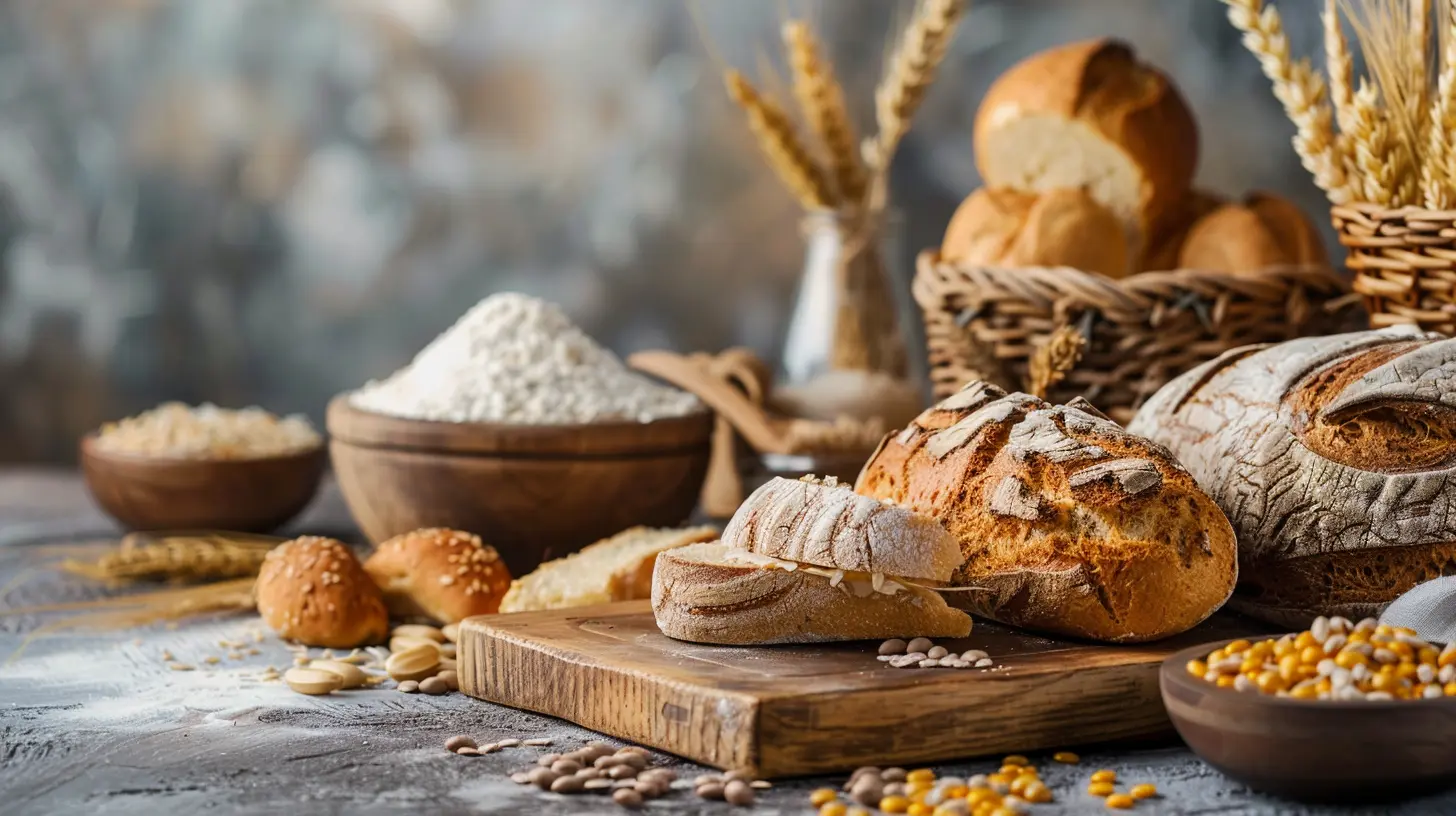Living Gluten-Free in a House Full of Gluten Eaters
22 July 2025
Living gluten-free is already a challenge, but when your household is full of gluten eaters, things get even trickier. You have to dodge cross-contamination, explain your diet choices (probably more than once), and somehow coexist with a pantry full of everything you can’t eat. Sounds exhausting, right?
But don’t worry—you’re not alone. Whether you have celiac disease, gluten sensitivity, or you’re just making a lifestyle change, there are ways to thrive in a gluten-filled home without feeling like an outsider. Let’s break it down! 
Understanding the Struggle: Why Gluten-Free Living Can Be Tough in a Mixed Household
If you’re gluten-free, you already know the drill: one breadcrumb in the wrong place can mean hours (or days) of discomfort. But for those who don’t share your dietary restrictions, it might not feel like a big deal.Here are the biggest challenges of living gluten-free in a house full of gluten lovers:
- Cross-contamination is real. Even a shared toaster, a stray flour dust cloud, or a knife that’s been dipped into peanut butter after touching regular bread can spell trouble.
- Constant explanations. “Yes, even a little bit of gluten hurts me.” “No, I can't just pick the croutons off my salad.” “Yes, gluten is in soy sauce too.”
- Feeling left out. When your family enjoys fresh-out-of-the-oven cookies, pasta night, or ordering pizza, it’s easy to feel like the odd one out.
- Temptation. Sometimes, the smell of freshly baked bread might make you question your choices (or your willpower).
So, how do you manage all of this without losing your sanity? Let’s get into some practical tips. 
Setting Up a Gluten-Free Safe Zone in the Kitchen
The kitchen is where most of the cross-contamination happens. Without a solid strategy, it’s like trying to keep a pool dry while everyone else is splashing around.Here are a few things that can help:
1. Have Your Own Dedicated Gluten-Free Space
- Separate shelves in the pantry and fridge. Designate a gluten-free shelf in both places, so there's no mix-up.- Your own toaster. Toasters hold onto gluten like a secret—it’s nearly impossible to clean every crumb. If you can, invest in a separate one.
- Labeled utensils and cookware. Wooden spoons and cutting boards can absorb gluten, so it’s best to have a separate set. Clearly label your gluten-free items to avoid confusion.
2. Implement a No-Double-Dipping Rule
If someone spreads butter on their regular bread and then dips the same knife back in, guess what? That whole tub is now off-limits for you. Prevent this by using:- Squeeze bottles for condiments
- Separate jars of peanut butter, jam, and other spreads
- A strict rule about using clean utensils every time
3. Clean, Clean, and Clean Some More
A crumb may seem harmless to your gluten-eating family members, but for you, it could mean a painful reaction. Be extra cautious by:- Wiping down surfaces before preparing food
- Washing shared cookware thoroughly (or using separate ones altogether)
- Using separate sponges and dishcloths for gluten-free dishes 
Talking to Your Family: How to Get Their Support
Having your family on board can make all the difference. But sometimes, getting them to take your gluten-free needs seriously can be frustrating.1. Educate Them (Without Being a Lecture Machine)
Instead of bombarding them with medical facts, explain it in terms they can relate to. Try something like:> "Think of gluten like poison for me. Even if I can’t see it, it still hurts me."
Or, if they insist that “a little bit won’t hurt,” remind them that even tiny amounts of gluten can trigger symptoms in people with celiac disease or sensitivity.
2. Make Gluten-Free Food They’ll Actually Want to Eat
If your family sees you enjoying delicious gluten-free meals, they’ll be less likely to pity you—or worse, make snarky comments about your food choices. Cook meals that are naturally gluten-free or tweak familiar favorites to work for everyone.- Tacos? Use corn tortillas.
- Pasta night? Get a good-quality gluten-free pasta and see if anyone notices.
- Pizza night? Make a gluten-free crust and let everyone build their own toppings.
3. Set Boundaries (Without Being a Food Dictator)
It’s okay to ask your family to be mindful, but expecting them to ditch gluten altogether probably isn’t realistic. Instead, set boundaries that help you stay safe without making them feel restricted.For example:
- "Please don’t prepare food on my gluten-free cutting board."
- "Can we agree to keep one section of the counter completely gluten-free?"
- "If you're baking with flour, can you let me know so I can step out?" 
Eating Together Without Stress
Mealtime should be enjoyable, not a battleground. Here’s how to make it work:1. Find Meals Everyone Can Enjoy
The easiest solution? Cook dishes that don’t require gluten in the first place. Think:- Grilled meats and veggies
- Rice-based dishes
- Soups and stews (just watch out for hidden gluten in broths and sauces)
2. Be Prepared for Takeout Nights
If your family decides to order pizza or Chinese food, already having a backup plan saves you from feeling left out. Keep easy gluten-free meals on hand, like:- Frozen gluten-free pizzas
- Pre-made salads with safe dressings
- Quick rice bowls with protein and veggies
3. Bring Your Own Food When Necessary
Going to a family gathering or dinner at a friend’s house? Bring a gluten-free dish to share. This way, you know there’s at least one thing you can eat, and you won’t feel awkward sitting out.Handling Social Situations and Eating Out
Going out to eat with a group or attending social events can be tricky. Here’s how to navigate it:1. Pick Restaurants That Get It
Not all restaurants are created equal when it comes to gluten-free options. Use apps like Find Me Gluten Free to locate safe spots. And don’t be shy—call ahead and ask about their gluten-free practices.2. Speak Up About Your Needs
When ordering, let your server know that gluten isn't just a preference for you—it's a necessity. Ask about preparation methods to ensure your food isn’t cross-contaminated.3. Always Have a Backup Plan
Keep gluten-free snacks in your bag. Whether it’s a protein bar, nuts, or a gluten-free granola bar, having something on hand prevents you from going hungry if safe options aren’t available.Final Thoughts: You’ve Got This!
Living gluten-free in a house full of gluten eaters isn’t always easy, but with a little planning, communication, and creativity, it’s totally doable. Set up your kitchen to minimize risk, educate your loved ones, and find ways to enjoy meals together without stress.And remember—it’s okay to advocate for yourself. Your health is worth it, and with time, your family will (hopefully) come to understand just how important it is to keep your space gluten-free.
So keep going, keep cooking, and keep enjoying your gluten-free life—even in a gluten-filled home.
all images in this post were generated using AI tools
Category:
Gluten FreeAuthor:

Angelo McGillivray
Discussion
rate this article
1 comments
Maggie Taylor
Living gluten-free in a house of gluten lovers? It’s like being a unicorn at a horse convention—fabulous and misunderstood! Embrace your inner diva, stock up on gluten-free goodies, and don’t forget to educate your housemates. They’ll either adapt or be left in the crumbs!
July 31, 2025 at 3:03 PM

Angelo McGillivray
Absolutely! Embracing your uniqueness is key. With tasty gluten-free options and a little education, everyone can enjoy the experience together! 🦄✨


